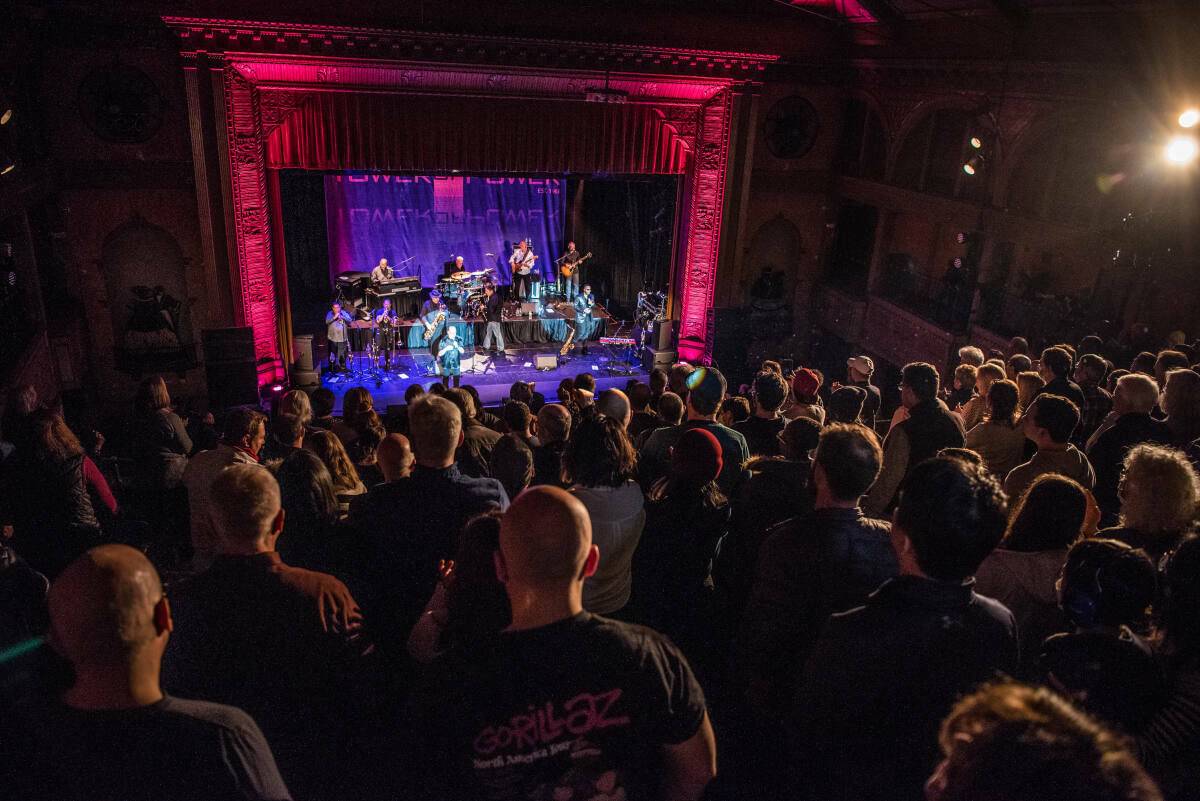Music lovers new to Tower of Power might be tempted to say the world’s premier exponents of horn-driven funk and soul have staged a mighty comeback. But ‘comeback’ implies that an artist went away in the first place…
The originally Oakland-based crew founded by alto saxophonist Emilio Castillo and baritone sax meister Stephen ‘Doc’ Kupka have in fact, been steadily gigging and recording for 50 years and counting.
Live audiences are treated to a mix that blends the group’s two trumpets, three saxes, full rhythm section, bubbling Hammond organ, and six vocalists with clarity akin to an audiophile-grade studio recording.
Castillo and Kupka award Audix microphones a sizable share of the credit here, deploying everything from the D6, D2, and D4 on drums to OM-series handhelds on vocals to yet another D6 paired with i5 instrument mics on the organ’s Leslie speaker. Castillo, drummer David Garibaldi, keyboardist Roger Smith and monitor engineer Nathan Bauld trace the band’s tenure and their penchant for Audix mics.
Tell us about your music beginnings…
Emilio Castillo: At 14, I started learning to play rock music and not long after, had a tight little teenage band. One night I saw this band called The Spiders. They were so completely soulful it just blew my mind. I wanted to be like them.
My brother knew this guy Mic Gillette, who had grown up in Fremont in the East Bay. We got together and started patterning us after The Spiders. Their horns and vocals were tight, and they did some obscure soul music rather than all the songs every other band was covering. Most importantly, they were exciting to watch live.
At the same time, Sly Stone was a popular disc jockey on KSOL. My father took me to see him. He said, “Go see his band Sly and the Family Stone.” I was like, “Oh, Sly Stone the DJ?”
My dad made arrangements for us to be there even though we were underage. We sat by the stage, right by the Hammond B-3 organ. The band started to play but there was nobody at the B-3. Larry Graham sang Losing You by The Temptations and Georgia.
Then, Sly walked through the dance floor wearing a Sherlock Holmes outfit! He walked up onstage and sat at the organ. They went into Can’t Turn You Loose by Otis Redding, so fast it was like light speed. It was at that moment that I understood what I wanted to do.




